Orbit: Signs of our Times
New Landmark
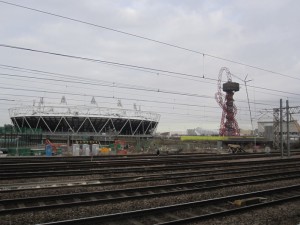
1_dia ArcelorMittal Orbit sculpture by Anish Kapoor with engineer Cecil Balmond. Source: Judith Ryser
Anish Kapoor has built a viewing tower with ten times the amount of steel than the roof of the Olympic velodrome next door. It consists of 2000 tons of new steel out of the ArcelorMittal owned factories, while the adjacent stadium was built with recycled gas pipes. Kapoor’s is an empty gesture, neither elegant nor pleasing for the eye, an experience as he calls it, just like the obligatory path to the Olympic games through the Westfield shopping centre. He is proud of having built a tower which is not really a tower, an illusion of a tower, a non tower, a tower which conveys a sense of instability, a deconstruction of a tower. Signs of our times indeed, but who decides on them? Mittal contributes most of the £19 million for this monument to post-modernism, agreed with the mayor of London at a chance meeting at the World Economic Forum in Davos.
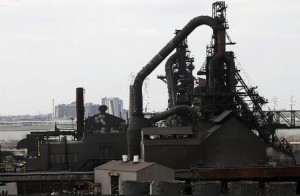
2_dia ArcelorMittal Steelmill Cleveland – resemblance? Source: http://csudigitalhumanities.org/exhibits/items/show/5087
Prowess
Kapoor designed his tower because it can be done. In the same verve, have we elected a government which is in fact a non-government, an illusion of a government, a testimony to deconstruction as Cecil Balmond calls the Orbit? Did they come to power because it could be done, on manifestos nobody intends to honour, with promises they cannot keep, spending money they do not have? Are we converting London into a testing ground for the next world war, just because it can be done? What those who can do it have in mind is six launching pads including on gated residential communities in the vicinity of the Olympic games site, for land to air missiles to bring down eventual terrorist rockets, perhaps somewhere onto the London urban fabric?
Together with Balmond, an engineer who believes in breaking down the cage that separates structural engineering from design, Kapoor came up with a convoluted tangle of steel spaghetti, defeating laws of nature perhaps, with a clumsy lid on top, all that to overlook a sea of poverty with towers at the horizon symbolising the dominance of capital.
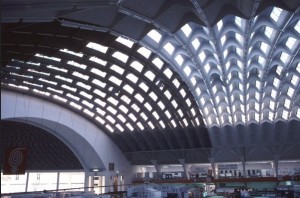
4_One example of many is the Palace of exhibition in Turin 1948 by Luigi Nervi. Source: http://www.canadianarchitect.com/asf/principles_of_enclosure/enclosure_typologies/enclosure_typologies.htm
Engineering art
Many structural engineers, Nervi, Morandi, Candela, Perret, Toroja, Calatrava to name but a few, did not seem to have to struggle with a chasm between design and engineering, quite the reverse. This is the case for Eiffel as well who built a tower, as high as he could as a piece of prowess, a piece of avant-garde engineering, a tower which was the mother of towers, a symbol of French knowledge, creativity and ingenuity. It is called the Eiffel tower to acknowledge the brain behind it.
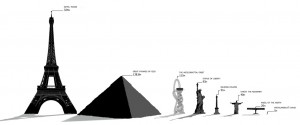
5_dia Engineering prowess: who can go highest? source: http://www.dezeen.com/2010/03/31/arcelormittal-orbit-by-anish-kapoor/
The comparison with the Eiffel tower is patently limping. Kapoor’s work is called the ArcelorMittal Orbit. Branding is the name of the game, be it the biggest piece of public art, world events, or whatever is up for grabs for a quick buck. What about CocaCola-MacDonald Olympics, or perhaps HSBC London? Branding could always go for auction to avoid embarrassment in case the sponsors fall out of favour and flavour.
The Eiffel tower is still standing, a symbol of French engineering and the attraction of Paris, although it was not meant to last. Just like the London Eye, conceived by architects against the will of those who can do it who bet on the Millennium dome, a white elephant bailed out by taxpayers as it was too big to fail. Conceding to their resilience those in power intended it to disappear soon after it was builtm but the London Eye is still there as one of the most popular tourist attractions in London, a new, elegant landmark of ingenious engineering with an obviously popular function, as opposed to the various skyscrapers which are agitating the London skyline.

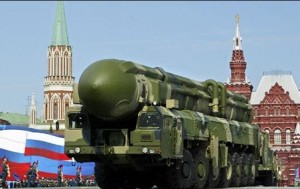

How much better if Kapoor would have built attractive affordable houses or a fascinating structure for key workers to have rented?
Centreparks can quickly build very cheap, well designed small villas to live in whilst on holiday and in a great natural environment.
Why can’t successive governments do the same thing?
Boris had the chance to do something for the lower paid – he had a chance to produce some homes for those that can least afford it – and right next to the Olympic Park – but he blew this opportunity.
Where is the rationality, humanity and compassion in today’s politicians?